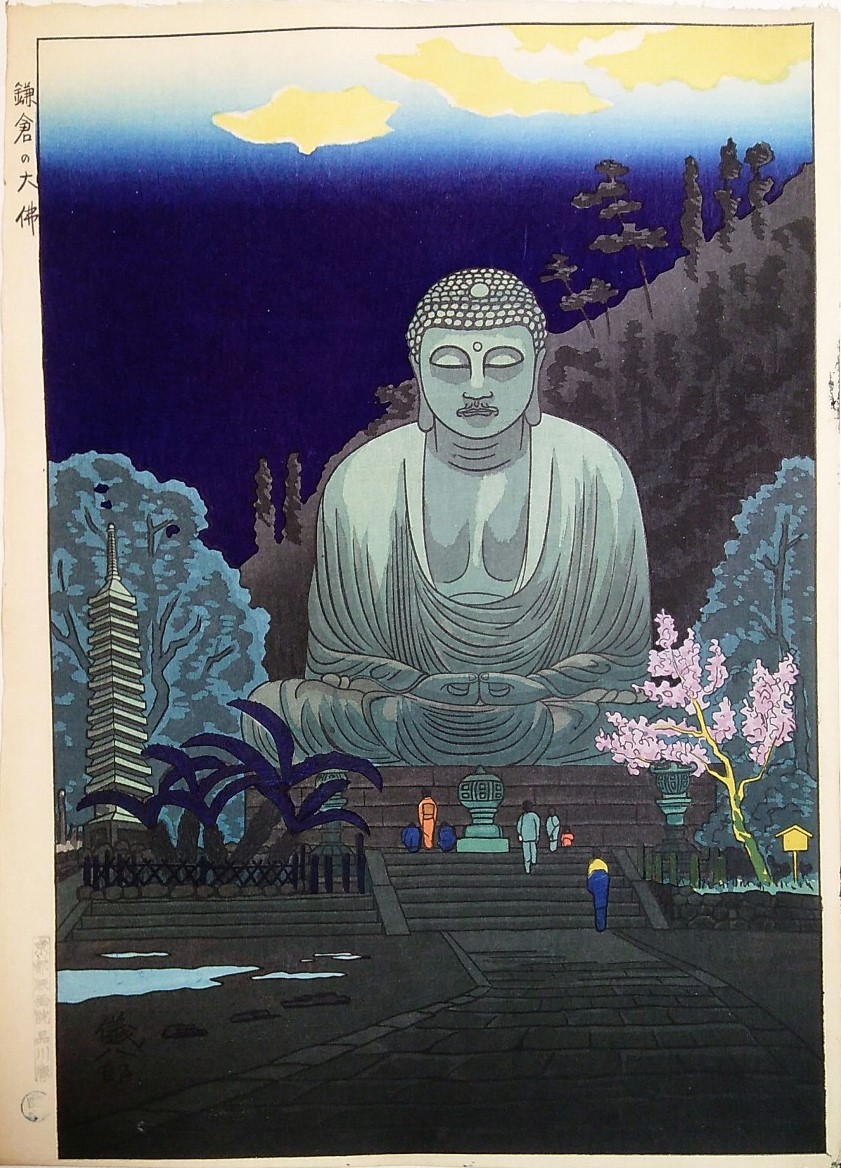Okuyama Gihachirō
1907 ~ 1981Okuyama Gihachirō was a prominent Japanese woodblock print artist from Yamagata Prefecture. He was a versatile figure in the art world, involved in both the Sōsaku Hanga and Shin Hanga movements,
and is recognized as a pioneer of commercial advertising prints in Japan.
Born in 1907 in Sagae, he developed an early affinity for woodblock prints begging his formal artistic education under Gajin Kosaka in 1923 and Kendō Ishii, a researcher of traditional Ukiyo-e, in 1936.
He first gained recognition in 1928 when his work was accepted into the Japan Creative Print Association Exhibition, which led to his involvement with commercial advertising. Between 1928 and 1931, he designed
around 40 posters for the watercolor printer Hidekichi Uchida and produced woodblock-printed advertisements for companies such as Nikka Whisky. In 1931, Okuyama founded the Tokyo Advertisement Art Association
(Tōkyō kōku bijutsu kyūkai) and contributed prints to the series "One hundred views of great Tōkyō. His work during this period was deeply influenced by the traditional printmaking philosophy of Kendō Ishii,
prompting him to revive and incorporate traditional techniques in his modern designs.
During World War II, Okuyama was part of the Nihon Hanga Hokokai, where Sōsaku Hanga and Shin Hanga artists collaborated to secure printing materials. After the war, he established the Japan Print Institute
(Nihon hanga kenkyū tokoro) which focused on producing reproductions of famous Ukiyo-e and Shin Hanga pieces. Unfortunately, the institute was not financially successful and closed in 1948. Undeterred, Okuyama
founded a new workshop in 1954 where he continued to create his own woodblock landscapes and reproduce famous artworks from both Eastern and Western traditions.
In 1965, Okuyama initiated the construction of the literary monument The Wild Chrysanthemum`s Grave in commemoration of the novel by Sacho Ito at the Sairenji Temple near his home. A room at the temple now displays
a dozen of his prints.

